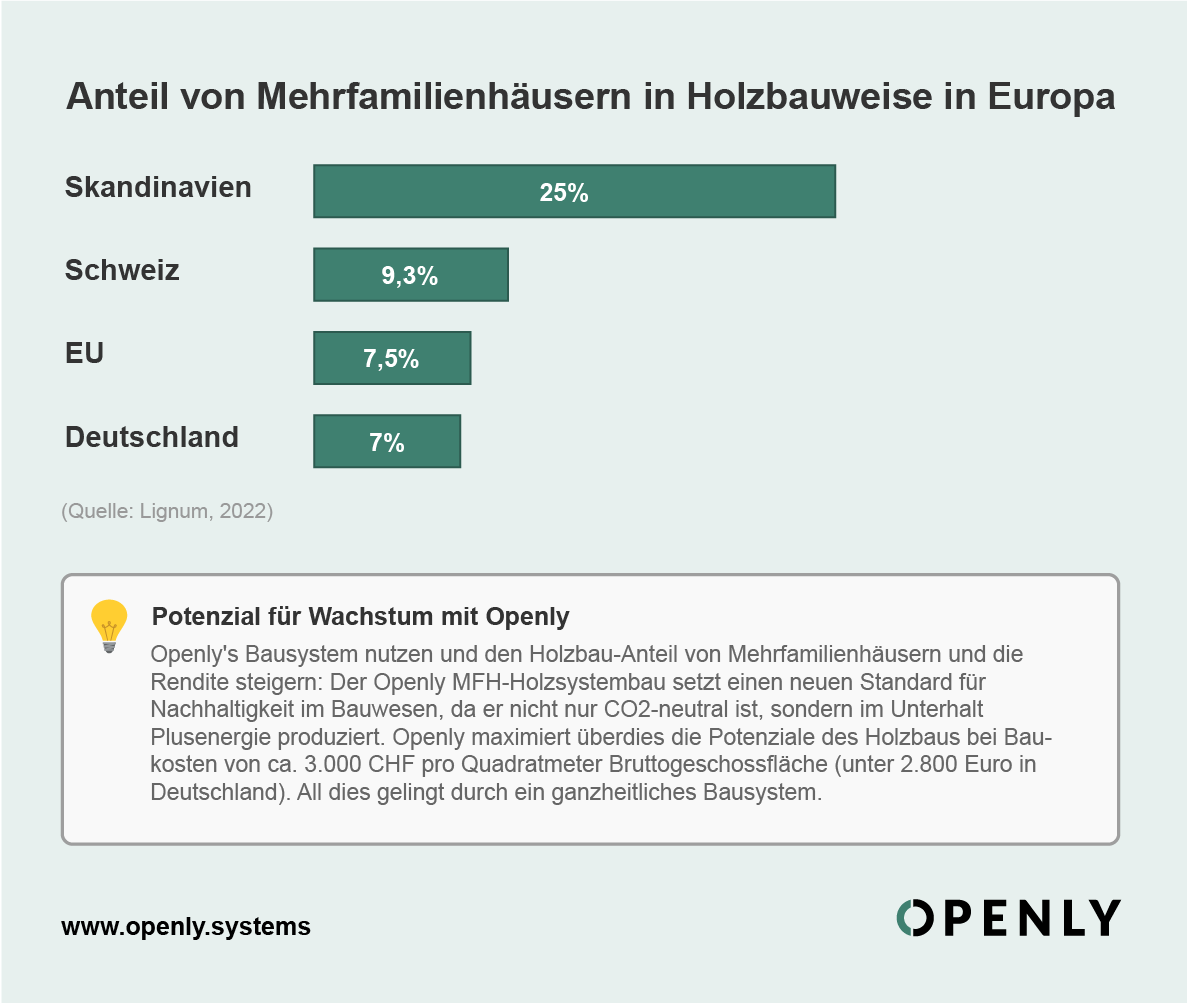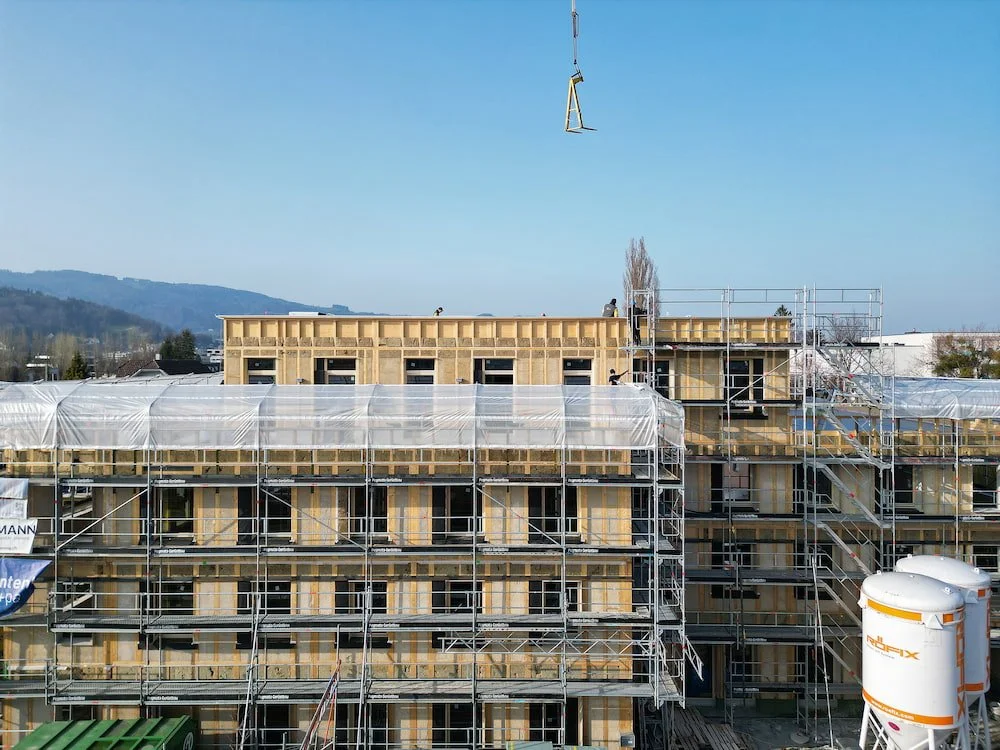Timber construction share in Switzerland and the EU - how Openly optimally exploits the potential of timber construction
Timber construction is also becoming increasingly important for large construction projects. In Europe, however, the proportion of multi-family houses in timber construction varies greatly.
While Scandinavia is well above the average at 20 to 30 %, Germany only achieves around 7 % for multi-family houses. The EU average is between 5 and 10 %. The trend is also on the rise in Switzerland - in 2022, the proportion of multi-family houses in timber construction was 9.3 %.
(Source: Lignum)
Why timber construction?
Wood is an impressive building material thanks to its outstanding ecological balance: it binds CO₂, is a renewable raw material and enables short transportation routes. Openly goes a decisive step further and maximizes the potential of timber construction at construction costs of around CHF 3,000 per square metre of gross floor area (less than EUR 2,800 in Germany). This is achieved through a holistic construction system based on three central pillars:
Low-CO₂ construction and certified carbon sinks
Openly consistently relies on predominantly fossil-free, regional and biogenic building materials. As a result, Openly buildings have particularly low "grey energy" values and already meet ambitious climate targets - such as the Danish target of a maximum of 6 kg CO₂ per square meter by 2029. In addition, the buildings act as certified carbon sinks: they permanently bind CO₂ and create additional financial incentives for builders and investors through tradable CO₂ certificates.Zero emissions in operation - redefining energy efficiency
Openly constructs buildings that meet at least the KfW 40 standard as well as the PlusEnergy or Minergie-P levels. This is achieved through excellent insulation values, high storage mass (e.g. through clay), optimized window surfaces, large-scale use of photovoltaics and an intelligent energy management system. This not only significantly reduces energy consumption, but also maximizes self-consumption of renewable energy.Longevity and value retention through circular construction
Openly consistently follows the cradle-to-cradle (C2C) principle: The buildings are designed to last at least 100 years and act as raw material depots. All components are plugged or screwed together, which enables flexible changes of use as well as unmixed dismantling and reuse. This preserves the value of the resources used in the long term.
Why CO₂ reduction and energy-plus homes are essential even without legal requirements
Regardless of legal requirements, reducing CO₂ emissions is essential: it protects the climate, minimizes environmental risks and reduces costs in the long term. Energy-plus homes - such as those built by Openly - generate more energy than they consume and therefore make an active contribution to the energy transition and to achieving net-zero targets. Residents benefit from low operating costs, independence from energy price fluctuations and a healthy indoor climate. Studies, for example by Wuest & Partner, also show that climate-friendly buildings are better valued and achieve higher returns in the long term.
Openly is a transparent and open system: we are happy to share our extensive expertise so that together we can make the greatest possible contribution to climate protection.
Our one-day training courses in the OPENLY.lab give more insight into the how and why and provide access to all OPENLY data.
The next training day is on 25.9.2025 in Widnau, SG.



